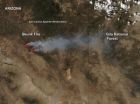(Press-News.org) CHAMPAIGN, Ill. — Soon, making and improving medical drugs could be as easy for chemists as stacking blocks is for a child.
University of Illinois chemist Martin Burke, a pioneer of a technique that constructs complex molecules from simple chemical "building blocks," led a group that found that thousands of compounds in a class of molecules called polyenes – many of which have great potential as drugs – can be built simply and economically from a scant one dozen different building blocks.
The researchers published their findings in the journal Nature Chemistry.
"We want to understand how these molecules work, and synthesis is a very powerful engine to drive experiments that enable understanding," said Burke, a chemistry professor at the U. of I. and the Howard Hughes Medical Institute. "We think this is a really powerful road map for getting there.
Once you have the pieces in a bottle, you can make naturally occurring molecules, or you can change the pieces slightly to make them better. Usually, that's such a herculean task that it slows down research. But if that part becomes on-demand, you can make anything you want, and it can powerfully accelerate the drug discovery process."
In the same way that plastic building blocks of different sizes and shapes can snap together because they share a simple connector, the chemical building blocks are linked together with one simple reaction. This gives scientists freedom to build molecules that may be difficult or expensive to extract from their natural source or to make in a lab.
One advantage of the building-block approach is that it allows the researchers to mix and match parts to build many different molecules, and to omit or substitute parts to make a potentially therapeutic substance better for human health. For example, Burke's group recently synthesized a derivative of the anti-fungal medication amphotericin (pronounced AM-foe-TAIR-uh-sin), which led to a big breakthrough in understanding how this clinically vital but highly toxic medicine works and the discovery of another derivative that is nontoxic to human cells while still effective at killing fungus.
After their success in synthesizing derivatives of amphotericin, which fall into the polyene category, the researchers wondered, how many different building blocks would it take to make all the polyenes? (Polyene is pronounced polly-een.)
Looking at the structures of all the known naturally occurring polyenes – thousands in all – Burke and graduate students Eric Woerly and Jahnabi Roy focused on the smaller pieces that made up the molecules and found that many elements were common across numerous compounds. After careful analysis, they calculated that more than three-quarters of all natural polyene frameworks could be made with only 12 different blocks.
"That is the key most surprising result," Burke said. "We've had this gut instinct that there will be a set number of building blocks from which most natural products can be made. We're convinced, based on this result, that we can put together a platform that would enable on-demand assembly of complex small molecules. Then researchers can focus on exploring the function of these molecules, rather than spending all their time and energy trying to make them."
Watch a video of Burke explaining the building block approach at https://www.youtube.com/watch?v=FkIOpDJ5XUc.
To demonstrate this surprising finding, the researchers synthesized several compounds representing a wide variety of polyene molecules using only the dozen designated building blocks. Many of these building blocks are available commercially thanks to a partnership between Burke's group and Sigma-Aldrich, a chemical company.
Burke hopes that identifying the required building blocks and making them widely available will speed understanding of polyene natural products and their potential as pharmaceuticals, particularly compounds that until now have been left unexplored because they were too costly or time-consuming to make.
Burke's group hopes eventually to identify and manufacture a set of building blocks from which any researcher – trained chemist or not – can build any small molecule.
"Now that we have this quantifiable result, that with only 12 building blocks we can make more than 75 percent of polyenes, we are committed to figuring out a global collection of building blocks – how to make them, how to put them together – to create a generalized approach for small-molecule synthesis."
INFORMATION:
The National Institutes of Health supported the work.
Editor's note: To contact Martin Burke, call 217-244-8726; email mdburke@illinois.edu.
The paper, "Synthesis of most polyene natural product motifs using just 12 building blocks and one coupling reaction," is available online at http://www.nature.com/nchem/journal/vaop/ncurrent/full/nchem.1947.html.
Making better medicines with a handful of chemical building blocks
2014-05-19
ELSE PRESS RELEASES FROM THIS DATE:
Improved supercapacitors for super batteries, electric vehicles
2014-05-19
RIVERSIDE, Calif. — Researchers at the University of California, Riverside have developed a novel nanometer scale ruthenium oxide anchored nanocarbon graphene foam architecture that improves the performance of supercapacitors, a development that could mean faster acceleration in electric vehicles and longer battery life in portable electronics.
The researchers found that supercapacitors, an energy storage device like batteries and fuel cells, based on transition metal oxide modified nanocarbon graphene foam electrode could work safely in aqueous electrolyte and deliver ...
Is Duloxetine more or less effective than Fluoxetine in children and teens with MDD?
2014-05-19
New Rochelle, NY, May 19, 2014—Two studies of the anti-depressive drug duloxetine, a serotonin-norepinephrine reuptake inhibitor (SNRI), compared its effectiveness and safety to either fluoxetine or placebo in children and adolescents with major depressive disorder (MDD). The results of these first controlled trials of duloxetine in pediatric patients with MDD are published in Journal of Child and Adolescent Psychopharmacology, a peer-reviewed journal from Mary Ann Liebert, Inc., publishers. The articles are available free on the Journal of Child and Adolescent Psychopharmacology.
Graham ...
Children who exercise have better body-fat distribution, regardless of their weight
2014-05-19
URBANA, Ill. – Maybe the numbers on the scale aren't alarming, but that doesn't mean that healthy-weight children get a pass on exercising, according to a new University of Illinois study published in Pediatrics.
"The FITKids study demonstrates the extent to which physical activity can improve body composition, and that's important because it matters to your health where fat is stored. But the study is also interesting for what happened in the control group to the kids who didn't exercise," said Naiman Khan, a postdoctoral researcher in the U of I's Division of Nutritional ...
New 'T-ray' tech converts light to sound for weapons detection, medical imaging
2014-05-19
ANN ARBOR—A device that essentially listens for light waves could help open up the last frontier of the electromagnetic spectrum—the terahertz range.
So-called T-rays, which are light waves too long for human eyes to see, could help airport security guards find chemical and other weapons. They might let doctors image body tissues with less damage to healthy areas. And they could give astronomers new tools to study planets in other solar systems. Those are just a few possible applications.
But because terahertz frequencies fall between the capabilities of the specialized ...
Study shows dementia patients benefit from holistic exercise program
2014-05-19
Philadelphia, PA, May 19, 2014 – While dementia patients can often suffer from depression and declining physical and mental ability, exercise has been shown to help improve both their physical and psychological wellbeing. Researchers at Teesside University in the U.K. investigated how combining cognitive activities and elements of yoga, tai chi, qigong and meditation with routine physical exercise affected dementia patients. They found that a holistic exercise program focusing on both mind and body can help improve quality of life for dementia patients. Their findings are ...
Optical brain scanner goes where other brain scanners can't
2014-05-19
Scientists have advanced a brain-scanning technology that tracks what the brain is doing by shining dozens of tiny LED lights on the head. This new generation of neuroimaging compares favorably to other approaches but avoids the radiation exposure and bulky magnets the others require, according to new research at Washington University School of Medicine in St. Louis.
The new optical approach to brain scanning is ideally suited for children and for patients with electronic implants, such as pacemakers, cochlear implants and deep brain stimulators (used to treat Parkinson's ...
Skunk Fire, Arizona
2014-05-19
The Skunk Fire continues to burn on the San Carlos Apache Reservation in southeastern Arizona and NASA's Aqua satellite captured an image of the smoke on May 17 at 20:15 UTC (4:15 p.m. EDT/1:15 p.m. MST). A Fire Weather Watch has been posted for the region for May 20.
The Moderate Resolution Imaging Spectroradiometer or MODIS instrument that flies aboard NASA's Aqua satellite captured this photograph of the smoke. The extent of the fire (the heat) is outlined in red in this image).
According to Inciweb, the multi-U.S. agency Incident Information System website that ...
Gastroenterology highlights new microbiome research
2014-05-19
Bethesda, MD (May 19, 2014) — The editors of Gastroenterology, the official journal of the American Gastroenterological Association (AGA) Institute, are pleased to announce the publication of this year's highly anticipated special 13th issue on the intestinal microbiome, which is considered one of the hottest areas of science today.
"We are beginning to understand the ways by which the microbial environment of the gut may play a role in both the maintance of human health and the development of certain diseases. Data in this special issue of Gastroenterology may lead ...
Liberating devices from their power cords
2014-05-19
Imagine a future in which our electrical gadgets are no longer limited by plugs and external power sources.
This intriguing prospect is one of the reasons for the current interest in building the capacity to store electrical energy directly into a wide range of products, such as a laptop whose casing serves as its battery, or an electric car powered by energy stored in its chassis, or a home where the dry wall and siding store the electricity that runs the lights and appliances.
It also makes the small, dull grey wafers that graduate student Andrew Westover and Assistant ...
Having and raising offspring is costly phase of life for baboon moms
2014-05-19
Observations made over the past 29 years in Kenya as part of one of the world's longest-running studies of a wild primate show how having offspring influences the health of female baboons. These observations highlight that females are mostly injured on days when they are likely to conceive. In addition, injuries heal the slowest when they are suckling their young. The study, published in Springer's journal Behavioral Ecology and Sociobiology, is led by Elizabeth Archie of the University of Notre Dame in the US and the National Museums of Kenya.
Reproduction can be dangerous ...





